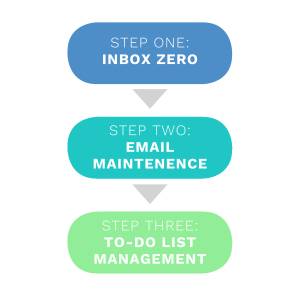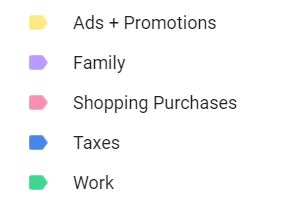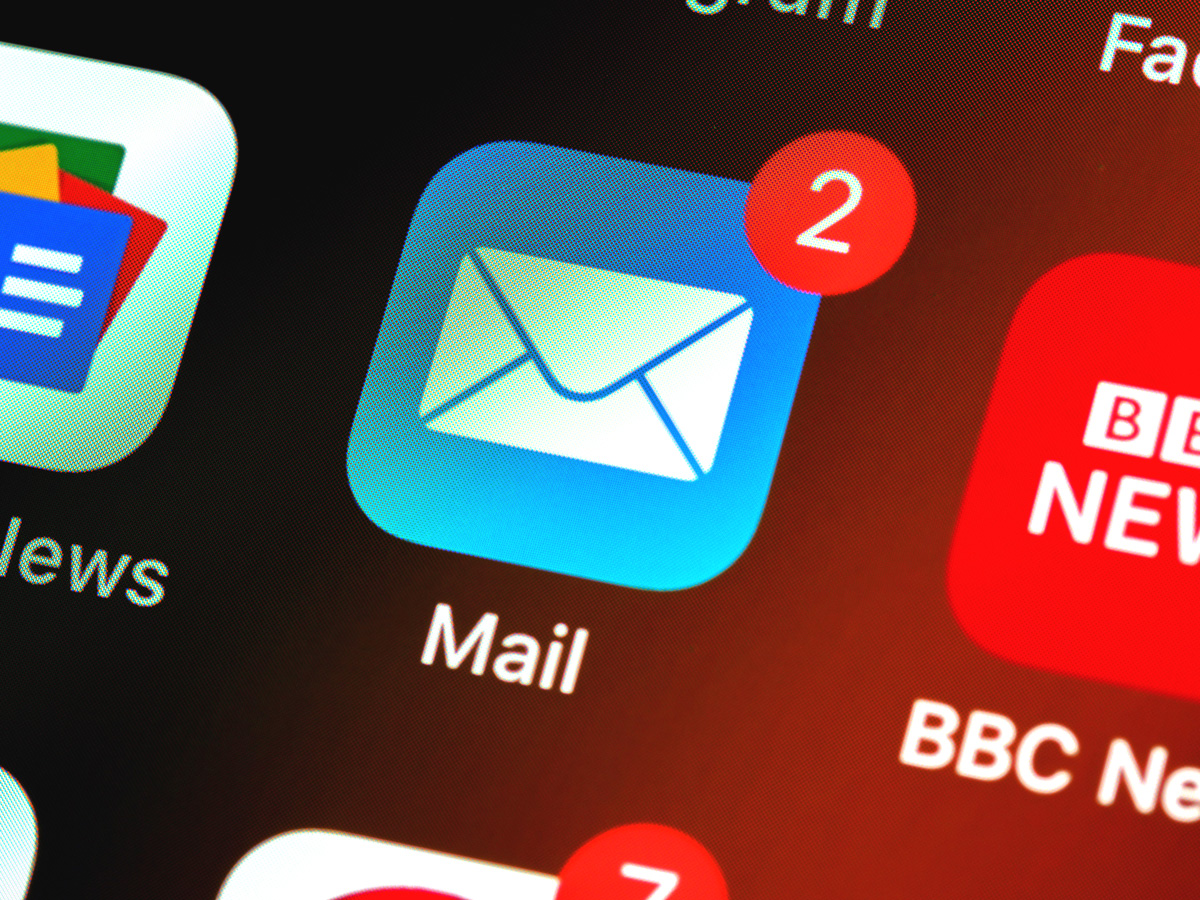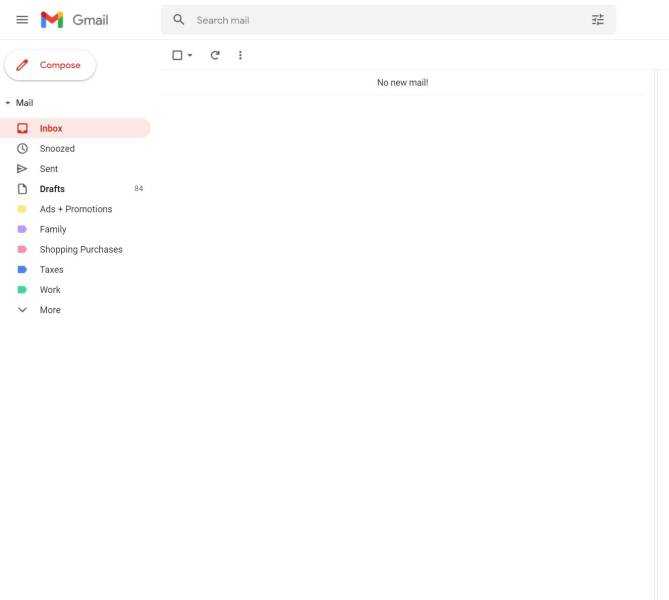Do you dread checking your email? Do you procrastinate opening your inbox for as long as possible, only to quickly glance at the flood of new messages and feel even worse than you did before you opened it? Do you find the “unread emails” notification increasingly growing into the hundreds or even thousands?
I intimately know these feelings around what I like to call “email anxiety”. I would absolutely dread checking my email, even going so far as to delete the email app on my phone so I wouldn’t be constantly reminded of my shortcomings. I was overwhelmed with the task of how to organize all of the current and ongoing freelance projects I juggled on a day-to-day basis.
I finally reached a breaking point when I realized my current uncontrolled system was actually having a detrimental effect on my mental health. I was tired of the constant dread and anxiety and finally decided to reach out and find some help.
That help came in the form of advice from my own dad. While organization is not one of my current strong suits, luckily, it is for my dad, and after explaining my predicament, and over a series of phone calls, he gave me some (quite literally) life-changing advice. Through a series of phone calls, he walked me through a three-step process (shown below) to tackling not only my emails, but my whole business management and project organization system, which had a profound impact on my anxiety and mental health overall.

Right now, we will only focus on the very first step.
INBOX ZERO
No doubt you’ve heard of Inbox Zero before. There are hundreds of videos and articles talking about it. Honestly, it seems like an arbitrary step, meant for highly organized people, not barely-keeping-it-together people. What does having zero emails in my inbox have to do with project management and my illustration work? How could that help me mentally? How am I supposed to keep track of all the clients and projects I’m juggling? Don’t I need to organize my schedule and to-do list first? That feels way more urgent than cleaning up my inbox.
While all those concerns are valid, reaching (and then afterward, maintaining) Inbox Zero must be the very first step, and I’ll tell you why:
You’re treating your inbox like a to-do list.
Before I learned how to manage my inbox, I would keep my current projects open in my inbox, and when I got started with work for the day, my email was the first thing I opened up to see what I had to do that day, to whom I had to reply, etc.
There is a psychological problem with this way of organizing your inbox and your projects. When you first open up your email to see what you need to do, you’re met with a long list, sometimes a very long list, which feels bad. It just feels gross staring back at a lengthy list of tasks, knowing you have to finish all of them. Having a long “to-do” list is discouraging to say the least, it also doesn’t help us to feel or stay motivated to complete said list. It becomes overwhelming and makes you feel like you aren’t accomplishing anything during the day, because instead of being rewarded with a smaller to-do list as you accomplish tasks, the list only becomes longer and longer.
Instead of treating our inboxes like a to-do list or like a project management system, we’re going to treat it differently. Instead, it will be the place where we can quickly sift through and process emails and then empty it back to zero. Opening up your inbox only to see a handful of new emails is SO much more freeing. You feel confidence again and it puts the control back into your hands.
There are countless articles and videos that can walk you through how to achieve Inbox Zero. Honestly, a lot of them were overwhelming to me and confusing to me as to how to handle all the current projects I had.
My goal here is to make this process as simple and easy for you as possible. I’m going to walk you 6 steps to reach inbox zero. I’m specifically using gmail in this article, but a lot of the principles still apply to the other email providers.
Step One:
Delete All Emails Before a Chosen Year
First, pick a year to be your starting year, usually 2-3 years back. Then, delete every email in your inbox from before that year. It feels a little scary to mass delete emails, but most emails beyond that aren’t needed anymore. If there are any super important emails, you can archive them. Otherwise, this will help you to start from a (semi) clean slate and reduce the bulk of the emails which, lets be honest, there’s no point in going through emails from years ago.
Step Two:
Create 5 Folders (or Tags): Work, Family, Ads + Promotions, Shopping Purchases, and Taxes

Here are the folders I use. Feel free to edit your own folders/tags as you see fit, and color-code them however it makes sense to you.
The next step is to create certain folders/tags so you can begin organizing your emails. I’ll explain a bit about each:
WORK
This one is big: basically, anything and everything to do with work, goes into this folder. Current projects, past projects, receipts for work expenses, convention information, anything. If it is even remotely connected to work, it goes into this folder.
But shouldn’t I have sub-folders?
Probably not. Creating sub-folders works for some people, yes, but if email management has been a struggle for you, this type of micromanagement system would likely overcomplicate things for you instead of being helpful and functional.
But how am I supposed to find things?
All you have to do is use the search function. Let’s say you need to find an emailed receipt for some painting supplies you bought a few months ago. Instead of trying to find where you put that email, all you’d have to do is go to the work folder and type in the name of the supply store. It immediately comes up without having to sift through a bunch of sub-folders.
How do I keep track of my current freelance projects if they’re all hidden in a folder?
There’s a solution for this problem once we get to the Email Maintenence article and the To Do List Management article; hold onto this question until then.
So again, if anything even remotely related to work goes into one folder “work”, you know you can retrieve anything from that one folder that you might need.
FAMILY
This one is pretty self-explanatory, anything and everything to do with family concerns go in here. If you have kids, anything for school, doctor visits, anything like that, goes here. If you are single or are in a relationship, your own personal doctor visits, medical emails, apartment/home, etc. this is where they all go. Personal emails from family and friends can also go here.
ADS + PROMOTIONS
Any time of email in the form of an ad or some kind of a store/newsletter promotion can go here. This is largely a reference folder, so you can go back to it when needed. The majority of my email subscriptions go to this folder, whether it’s personal or work, but you can organize that however it works best for you.
SHOPPING PURCHASES
Any time you make a purchase and want to hang onto the email, they all go into this folder. This is for PERSONAL shopping, as any work-related shopping and expenses need to go to the work folder as receipts.
TAXES
This is one I added for myself, as I had a hard time differentiating between whether taxes should go into the “work” folder or the “family” folder. Feel free to use this folder yourself or separate them accordingly.
I’ve found all of my emails fall into at least one of these 5 folders. The goal is to keep the number of folders to the absolute minimum; try to go as low as possible. Adding unnecessary folders will ultimately result in decision fatigue and make things unnecessarily complicated.
Of course, if you find yourself with a group of emails that doesn’t fall into any of these categories, feel free to add another type of folder. This is your system, so making it work for you is very important.
Step 3:
Process Your Emails
Now we finally get to start officially organizing your inbox! Put on your headphones, play some music, and let’s get started!
Delete any unwanted or unneeded emails (this will probably be more than you think). Almost any email you want to keep that falls into the above folders, go ahead and start moving the emails to their designated folders.
A couple of tips to make things go smoothly:
-
-
- You can mass delete emails to speed things up.
- Unsubscribe to newsletters you no longer open. You save yourself a lot of work in the future by taking 10 seconds to click on an email newsletter and unsubscribe to it, as opposed to having to delete them every time it shows up in your inbox.
- You can filter messages as you come across them, which will make email maintenance (the step after we reach inbox zero) a lot easier. Using the “filter” option, you can decide what emails you want to hit your inbox first, which you can send directly to your folders.
- Work emails should always hit the inbox first, while family-related emails and the others get sent directly to their own designated folder. In other words, the goal is to have only work-related emails land in your inbox, and you can set up your current system to make that possible through filters. There are a ton of videos and articles showing you how to use filters (in gmail), so if you need more information about that, you can find it from people who are better than me at explaining it.
-
Once you start getting into the flow of processing your inbox, it quickly gets easier and faster. You start to learn the shortcuts and it gets easier to make decisions as to where things should go.
It honestly will not take as much time as you might think. Before you know it, your inbox will look like this:
Look at all that empty space! It looks so light and open and free! I guarantee when you finally reach inbox zero, you are going to feel SO much better. Yes, there is more to be done, and by no means am I claiming this will cure anxiety and depression, but it does help you feel a LOT better. For now, I want you to take a moment and bask in the feeling of lightness and of being free from the burden you’ve been carrying all these years.
When I first started this process over a year ago, I had about 17,000 emails TOTAL, with 4,000 emails in my inbox alone. After getting into the flow and a couple hours later, I was able to get my inbox down to zero. Years of dread and anxiety surrounding emails, gone in a couple hours. I feel so much better checking my email now, and having confidence in a system that works for me.
My hope is that you are able to carve out the time to make this a priority, especially if you struggle with any of the overwhelming feelings I mentioned in the beginning. Even if you only have ten minutes, I promise it’s worth every minute.
. . .
As an important reminder and a sneak peek about the next step in the overall organization system, the goal of Inbox Zero is not perfection. It’s maintenance.
Over the past year, I have fallen behind many times on maintaining my empty inbox. It slowly builds up, sometimes up to 50-100 emails, and I’m reminded again why I started this whole process in the first place. I then prioritize ten minutes to process the emails, and it’s back to zero.
The reason I’m telling you this is to remind you that the goal here isn’t perfection. Do not beat yourself up when you start to build up the emails again. Keeping your inbox empty is not a moral issue. You are not a good person because you keep your inbox clean. You are not a bad person because your inbox is in the thousands. Be compassionate with yourself, remember that this system is here to serve YOU. You are NOT here to serve the system. It’s about making life functional for you. So be kind to yourself and clean it when you can. You deserve to feel free from your inbox.
I can talk more about this in the next article when we dive into how to manage and maintain your inbox now that you’ve cleaned it. But for now, please take a moment and bask in the glory of an empty inbox!
Let me know if you have any questions and I will do my best to help in any way! Thanks for reading!









Long time Muddy Colors reader here. But my main business is email archiving.
Don’t you have a business? How many years do you have to keep your emails in America? Here in Germany it’s 10 years. So deleting all emails after 2-3 years is not a good idea.
Using the archive functionality in Gmail or any email client removes the mailbox structure. You should also never trust Gmail because it has it’s own ideas what is spam and what is not spam. Instead archive your emails with an email archiving app. For each OS there are quite a few options.
Moving emails out of the inbox if they contain things you have to do is just window dressing. You still have to do the work. Project management using an Inbox sucks. Therefore, I have other systems. But I always keep customers who expect an answer in my Inbox.
And lastly: 17k emails is absolutely nothing. Really.
Hi Beatrix, thanks for sharing your thoughts! That’s interesting to hear that in Germany it’s advised to keep emails for 10 years if you have a business. I agree that the archive functionality is a great tool as it allows you to keep emails without deleting them.
I usually get around Gmail’s spotty spam filtering by regularly checking my spam folder to see if anything got through the cracks, but then using Gmail’s filtering functionality to keep important client emails from getting in there. I agree that whatever algorithm they use to determine spam is pretty frustrating.
I totally agree that using an inbox as a project management system sucks, which is why I have a different system I use to manage all my ongoing projects, as I mentioned in the article. I’m looking forward to sharing that system in a future article, and hopefully someone finds it helpful to them to keep track of their current projects and do the actual work. No one should be using their inbox to manage their projects – that was a big part of why I wrote this article in the first place.
Lastly, I’m happy for you that 17k emails is lightweight! For me, personally, that amount was overwhelming, and I’m very proud of myself for processing that many emails. Different thresholds for different people I guess!
Thanks again for your thoughts Beatrix, have a great day.
This post (and its bright loud email to us) is sort of freaking me out in a ‘oh-crap-this-blog-is-now-spam’-feeling way. It’s coming across to me like infomercial-spam and not like true clean help. Some people may love it, but some might not, even those of us with businesses etc. Oh well. Different people, different views. The really bright spammy visual in the email made a big negative difference to me.
Hello, thanks for your comment! I can totally see what you mean about it looking too spammy. I thought it was a somewhat eye-catching image to feature, which is the only reason I decided to include it. I’m sorry it ended up having such a negative impact for you. I hope my future articles on this blog will be more helpful to you moving forward!
Thanks, have a great day!
I for one found this article very helpful! The admin side of illustration is just as important as the creative side, and I’m glad to see articles tackling that on MuddyColors. My inbox is absolute chaos at any given moment, and I often lose track of things, so this is just the motivation I needed to implement a better system. 🙂
Hi Rovina, I’m so glad you found my tips helpful! I know exactly what you mean about your inbox being in absolute chaos, it’s such a depressing feeling! As freelancers, we end up spending a lot of time in our inbox when most of us would rather be painting 🙂 The reason I wanted to write this in the first place was for the same reason you mentioned, because I was drowning and desperate for a solution, but didn’t know how to implement it in a way that made sense to my artist brain. I totally understand that different systems work for different people, and this is what helped me personally. I hope it can help someone else too!
Best of luck Rovina, it takes a lot of work but is absolutely worth it!
Inspired to make a big email purge now! It’s a hot mess and I have waaaay too many newsletters I hardly touch. I need an Unsubscribing Fairy.
Hi Christine, oooh I’m so glad to hear this was helpful for you! I would also love a visit from the unsubscribing fairy, haha. Best of luck, let me know if I can help in any way!